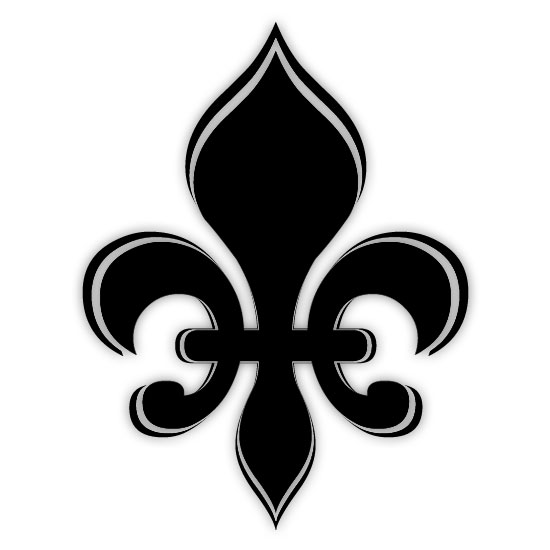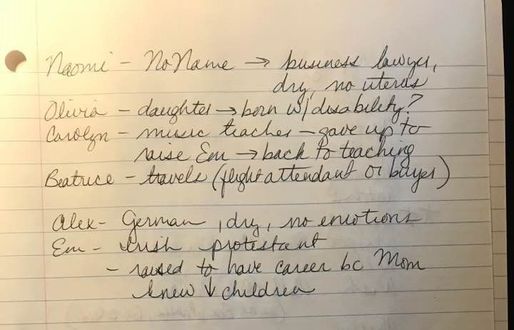|
Mapping Generations Family relationships serve as the backbone to my novels, including Broken Blue Willow. When I first set out to craft a character story, I like to imagine their family relationships in the form of the traditional family tree. Graphic, organized visuals help me keep characters and relationships organized. I usually print out a hard copy and keep it nearby while I write to use as a reference, or even to jot down notes. I go through several versions of the family tree as I add generations, branch out with more characters, and change names. Below is a photo of the last working version of the Broken Blue Willow family tree: As you can see, this family tree was indeed my "working model", stains and all. Now I will go through the family tree from the top down and explain my thought process when finding the appropriate names for the characters. 1. GG aka Great-grandmother Hazel Maria Farkas GG is the matriarch of the family, the manipulator, the antagonist. Besides Em/Margaret, she is the most important character in the story. When searching for the right name, I knew it had to be old fashioned and it had to be a believable name for a young Hungarian child born in the early 20th Century. I researched popular girl names for the time period and cross-referenced them with passenger lists for immigrants coming through Ellis Island around 1910-20.  I found a handful of appealing first names, but when I discovered one meaning for Hazel could be the Old English "commander", I knew I had landed on the right one. While searching the passenger lists on the Ellis Island database, I stumbled upon the perfect surname, Farkas. For some reason, the name jumped out at me, perhaps because it is so unique, or maybe because I liked the harsh sound it made when I spoke it aloud. GG's fate was sealed when I discovered that Farkas in Hungarian means "wolf". Perfect! Even thought her maiden name is only mentioned once in the book, just knowing its meaning helped me shape her character. And now you know, too. 2. Grandma aka Dorothy Anne Wright Dorothy was one of the names that popped up on the list for GG, so it seemed natural to use it here. In Old English, the name means "gift from God". I also liked the allusion to Dorothy Gale from The Wizard of Oz, fitting in well with Em/Margaret's hero. The married name Gable, came to me in a backwards fashion. It began when the name Margaret Gable Skinner popped into my head and repeated non-stop until I wrote it down. It just seemed to roll off the tongue. I had no reason for the name, so I had to find one. I searched for name meanings and alternate spellings and found the German version "Goebel". This is how I worked in the backstory of Dorothy marrying a man who Hazel disliked because he was German. Like many immigrants, the family changed the spelling to make it more American during a time of anti-German sentiment. 3. Dorothy's Daughters When finding names for Dorothy and George's daughters, I used two opposing methods. For the older two daughter, whose characters are less likable, I chose names that mean the opposite of their main character trait. For the younger two daughters, who are more likable, I chose names that compliment their main positive characteristic. Naomi: (Hebrew) pleasantness The oldest Gable sister is anything but pleasant. She is cold, dry, and childless. Olivia: (English) olive tree, peaceful, fruitful The second Gable sister is harsh, competitive, and has fertility problems as well. Caroline: (Italian) strong Margaret's mother is the strongest and most independent of the four daughters, and also the most practical, although she seems a bit aloof to her daughter's struggles. Beatrice: (Latin) bringer of joy Margaret's favorite aunt and her role model, she is full of joie de vivre 4. Margaret Gable Skinner I have stated before that the big reason I used the name Margaret for the main character of Broken Blue Willow is because my daughter has always asked that I please use her name in one of my books. How could I say no? Using the name as a starting point, I began to think about an appropriate surname. Because her main characteristic is superstition, I researched the topic and B.F. Skinner was one of the top results. It was a challenge, however, to not imagine Principle Skinner whenever I typed, wrote, or otherwise referenced the name. Margaret turned out to be a great name to use for nicknames as well. Each version of Margaret, each stage of her life as she defines it, sees a different version of her name. Margaret in childhood, M.G. in preteen through the death of Jonathan, and Em thereafter, in an attempt to shed all previous versions of herself. Claiming a new nickname was another way for her to feel like she was taking control of her life. Names are Easter Eggs I have a lot of fun discovering names for my characters. It seemed more like the characters were revealing their names to me as I worked my way backwards through Em/Margaret's family tree. It felt like I was discovering real people who actually lived in the world. Characters in fiction indeed do take on a life of there own.
The difference is the secret joy I receive in weaving my own little Easter Eggs into the names.
0 Comments
|
About meI write novels and poetry and this blog. Categories
All
Archives
January 2022
|






 RSS Feed
RSS Feed
